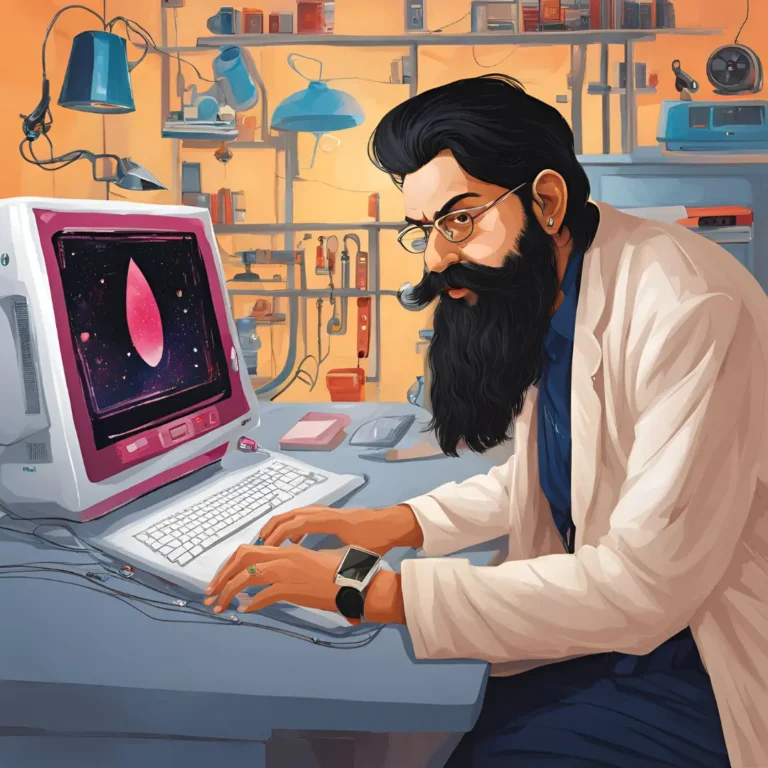Justin Turner Texas Tech Accident
Justin Turner, a prominent figure at Texas Tech, found himself at the center of an unforeseen accident that not only shook the university but also raised questions about campus safety protocols and their effectiveness. Texas Tech University, located in the bustling city of Lubbock, Texas, is known for its vibrant community and academic excellence. This incident, however, brought a different kind of attention to the campus, spotlighting the safety measures in place and their real-world implications.
Some items on the Sonic menu seem to get a universal thumbs-up. The Cherry Limeade is one such favorite. Customers rave about its refreshing blend of sweet and tart flavors. Tater Tots also earn high marks. They’re crispy, satisfying, and the perfect sidekick to any burger or sandwich. If you love a hearty burger, the SuperSONIC Bacon Double Cheeseburger often tops the list. Many reviewers highlight its juicy patties and crispy bacon, emphasizing the real quality of the ingredients.
Understanding the context of this accident is crucial, not just for the immediate community of Texas Tech but for educational institutions everywhere. It sheds light on the balance between daily operations and the unforeseen risks that can emerge. Moreover, it serves as a catalyst for a broader discussion on how safety and preparedness should be prioritized to protect students and staff alike. Through this examination, we aim to uncover not only the specifics of what happened to Justin Turner but also how it can inform future safety protocols in educational environments. This is a tale of when routine turns into risk, and it’s one that we can all learn from to foster safer learning spaces.

Background Information
Justin Turner, before the spotlight fell upon him due to the accident, was known more for his contributions and roles within the Texas Tech community. Turner, an involved and respected member at Texas Tech, played multiple roles that bridged academic contributions with community outreach. His presence at the university was not just limited to his professional responsibilities; it extended into mentoring students and leading initiatives that aimed to enhance both the learning environment and the overall campus experience.
His dedication went beyond the confines of his job description, embodying the spirit of Texas Tech through his daily interactions and long-term commitments. Turner’s impact is seen in the programs he helped develop and in the personal stories of those he worked with directly—students and colleagues alike.
PS: Learn about Editor Benjamin the Tech Guru, what happened to him.
Overview of Texas Tech
Located in the heart of Lubbock, Texas, Texas Tech University stands as a beacon of higher education, recognized for its robust academic programs and vibrant campus life. As a major educational hub in West Texas, the university not only contributes significantly to the local community through educational opportunities but also through economic and cultural enrichment.
The relationship between Justin Turner and Texas Tech is a poignant example of how individuals and institutions can intertwine. Turner’s roles at Texas Tech went beyond his immediate professional scope, influencing broader campus policies and contributing to the university’s mission of fostering a supportive and dynamic educational environment. This connection highlights the impact that dedicated individuals can have on shaping the ethos and safety culture of a large institution. Through understanding both the person and the place, we gain a clearer picture of the incident’s implications and the collective response it necessitated.
The Accident
On a clear morning in early October, the usually bustling campus of Texas Tech University was struck by an unforeseen incident that halted its daily rhythm. The accident occurred near the central library, a hub of student activity, making the event all the more shocking to the community. Justin Turner was involved in what appeared to be a simple misstep that led to a significant fall, resulting in immediate concern among witnesses and the rapid involvement of campus emergency services.
The event unfolded quickly, with many students and faculty members nearby rushing to aid, illustrating the tight-knit nature of the campus community. This incident, seemingly small in scale, rippled through the university, prompting a thorough examination of what had occurred.
Causes and Immediate Consequences
Initial investigations into the accident pointed towards a combination of environmental and personal factors. The area where Justin fell had recently undergone maintenance, which included the application of a non-standard cleaning solution that left the surface unusually slick. Despite signage warning of the potential slip hazard, the signs were small and not as conspicuous as they could have been.
The immediate impact on Justin Turner was considerable. He sustained injuries that required hospitalization and a series of treatments that sidelined him from his duties at Texas Tech for several weeks. The incident not only affected Turner physically but also sparked a wave of concern across campus about the adequacy of current safety measures and the need for more robust protocols. This event became a case study in how small oversights can lead to significant consequences, driving a campus-wide dialogue about safety and prevention.
Responses to the Accident
Before the incident involving Justin Turner, Texas Tech University boasted a comprehensive set of safety protocols designed to protect its community. These included regular maintenance checks, clear signage for potential hazards, and quick-response teams for emergencies. Training sessions on safety were also a routine part of campus life, aimed at educating both students and staff about how to avoid and react to potential dangers.
However, the accident highlighted specific gaps, particularly in how environmental hazards were communicated. The small, easily overlooked signs warning of the slippery conditions were evidently insufficient. This incident prompted a review of how information about temporary hazards is conveyed to the campus community, ensuring that such signs are more visible and numerous around affected areas.
Legal and Medical Responses
Immediately following the accident, Texas Tech’s emergency response teams were quick to assist, showcasing their readiness and efficiency. Justin Turner was swiftly taken to a nearby hospital where he received medical care for his injuries, which included a series of treatments to address a concussion and a fractured wrist. The university’s health services also followed up with ongoing support during his recovery.
Legally, the situation was handled with a keen sensitivity to both the personal and institutional implications. While there were no formal charges or lawsuits, the university conducted an internal review to assess liability and improve future safety measures. This proactive legal review helped to foster a sense of trust and responsibility, reaffirming the institution’s commitment to safety and care for its members. This response not only addressed the immediate needs of Justin Turner but also set a precedent for handling similar incidents in the future, emphasizing prevention and swift, compassionate care.
Community Impact
The accident involving Justin Turner prompted an immediate and compassionate response from both Texas Tech and the surrounding community. University officials quickly issued statements expressing concern for Turner’s well-being and affirming their commitment to reviewing and improving campus safety protocols. Students and faculty rallied in support, organizing community gatherings and safety awareness events, which highlighted the collective commitment to fostering a safer environment.
The broader community’s reaction was one of empathy and proactive engagement. Local businesses offered support in various forms, from donations to services, aiding in Turner’s recovery and furthering safety education initiatives on campus. This united response underscored the strong ties between the university and the Lubbock community, showcasing how adversity can strengthen communal bonds and collective resolve.
Media Coverage
The incident was covered extensively by both local and national news outlets, each bringing a different lens to the story. Local news primarily focused on the immediate effects of the accident and the subsequent safety discussions it sparked on campus. They emphasized personal stories, including interviews with students and staff who were on the scene, adding a personal touch to the coverage.
Nationally, the coverage was broader, often linking this incident to wider discussions about safety in educational institutions. Some outlets used the story as a case study in how universities handle unexpected accidents and their aftermath. The media’s role in shaping the public’s perception and understanding of the accident at Texas Tech was significant, spreading awareness and prompting discussions on safety that reached far beyond Lubbock.
Learning and Moving Forward
In the wake of Justin Turner’s accident, Texas Tech University took a critical look at its safety protocols to identify and rectify shortcomings. One significant change was the enhancement of environmental hazard signage. The university introduced larger, more noticeable signs and implemented digital alerts through the campus app to notify students and staff of potential dangers in real-time. Additionally, Texas Tech launched a comprehensive review of all campus maintenance procedures to ensure that all potential hazards are addressed promptly and effectively.
The broader implications for safety in university settings have also come under scrutiny. Texas Tech’s response has set a precedent, prompting other institutions to reevaluate their own safety measures. This includes not only physical safety enhancements but also training programs that empower students and staff to take proactive steps in maintaining a safe environment.
Supporting Justin Turner and Safety Initiatives
The community’s support for Justin Turner during his recovery was a testament to the strength and compassion of the Texas Tech family. Fundraisers and support campaigns were launched, not only to assist with his medical expenses but also to fund new safety initiatives inspired by the incident. These initiatives have focused on everything from improving physical campus safety to providing mental health resources for those affected by campus accidents.
Institutionally, Texas Tech has established a safety scholarship in Turner’s name, aimed at funding research and projects that advance campus safety innovations. This ongoing support reflects a deep commitment to transforming a moment of crisis into a sustained movement for safety and well-being across campus settings. Through these efforts, Texas Tech hopes to ensure that the lessons learned from this accident will lead to lasting improvements in how educational institutions manage and mitigate risks.
Conclusion
The accident involving Justin Turner at Texas Tech University has been a pivotal moment for the institution and its community. It highlighted the critical need for rigorous safety protocols and the impact these protocols can have on individual lives and the broader campus environment. The university’s response, marked by an immediate and compassionate care for Turner and a swift review of safety measures, sets a standard in institutional responsibility.
This incident has not only reinforced the importance of safety in educational settings but also strengthened the bond between the university and the Lubbock community. The proactive steps taken by Texas Tech to enhance safety measures and the support from the community reflect a shared commitment to not just react to accidents, but to prevent them.
The ongoing impact of this event continues to teach valuable lessons about preparedness, response, and the importance of community in facing and overcoming challenges. Through these lessons, Texas Tech is paving the way towards a safer future for all its members.
Have you ever heard about an event that made you pause and really think about the safety measures in places that should protect us? Well, that’s exactly the kind of reflection triggered by the accident involving Justin Turner at Texas Tech University. It’s a story that ties together personal impact and institutional responsibilities, offering valuable lessons on several fronts.
Justin Turner, a prominent figure at Texas Tech, found himself at the center of an unforeseen accident that not only shook the university but also raised questions about campus safety protocols and their effectiveness. Texas Tech University, located in the bustling city of Lubbock, Texas, is known for its vibrant community and academic excellence. This incident, however, brought a different kind of attention to the campus, spotlighting the safety measures in place and their real-world implications.
Understanding the context of this accident is crucial, not just for the immediate community of Texas Tech but for educational institutions everywhere. It sheds light on the balance between daily operations and the unforeseen risks that can emerge. Moreover, it serves as a catalyst for a broader discussion on how safety and preparedness should be prioritized to protect students and staff alike. Through this examination, we aim to uncover not only the specifics of what happened to Justin Turner but also how it can inform future safety protocols in educational environments. This is a tale of when routine turns into risk, and it’s one that we can all learn from to foster safer learning spaces.
Background Information
Justin Turner, before the spotlight fell upon him due to the accident, was known more for his contributions and roles within the Texas Tech community. Turner, an involved and respected member at Texas Tech, played multiple roles that bridged academic contributions with community outreach. His presence at the university was not just limited to his professional responsibilities; it extended into mentoring students and leading initiatives that aimed to enhance both the learning environment and the overall campus experience.
His dedication went beyond the confines of his job description, embodying the spirit of Texas Tech through his daily interactions and long-term commitments. Turner’s impact is seen in the programs he helped develop and in the personal stories of those he worked with directly—students and colleagues alike.
Overview of Texas Tech
Located in the heart of Lubbock, Texas, Texas Tech University stands as a beacon of higher education, recognized for its robust academic programs and vibrant campus life. As a major educational hub in West Texas, the university not only contributes significantly to the local community through educational opportunities but also through economic and cultural enrichment.
The relationship between Justin Turner and Texas Tech is a poignant example of how individuals and institutions can intertwine. Turner’s roles at Texas Tech went beyond his immediate professional scope, influencing broader campus policies and contributing to the university’s mission of fostering a supportive and dynamic educational environment. This connection highlights the impact that dedicated individuals can have on shaping the ethos and safety culture of a large institution. Through understanding both the person and the place, we gain a clearer picture of the incident’s implications and the collective response it necessitated.
The Accident
On a clear morning in early October, the usually bustling campus of Texas Tech University was struck by an unforeseen incident that halted its daily rhythm. The accident occurred near the central library, a hub of student activity, making the event all the more shocking to the community. Justin Turner was involved in what appeared to be a simple misstep that led to a significant fall, resulting in immediate concern among witnesses and the rapid involvement of campus emergency services.
The event unfolded quickly, with many students and faculty members nearby rushing to aid, illustrating the tight-knit nature of the campus community. This incident, seemingly small in scale, rippled through the university, prompting a thorough examination of what had occurred.
Causes and Immediate Consequences
Initial investigations into the accident pointed towards a combination of environmental and personal factors. The area where Justin fell had recently undergone maintenance, which included the application of a non-standard cleaning solution that left the surface unusually slick. Despite signage warning of the potential slip hazard, the signs were small and not as conspicuous as they could have been.
The immediate impact on Justin Turner was considerable. He sustained injuries that required hospitalization and a series of treatments that sidelined him from his duties at Texas Tech for several weeks. The incident not only affected Turner physically but also sparked a wave of concern across campus about the adequacy of current safety measures and the need for more robust protocols. This event became a case study in how small oversights can lead to significant consequences, driving a campus-wide dialogue about safety and prevention.
Responses to the Accident
Before the incident involving Justin Turner, Texas Tech University boasted a comprehensive set of safety protocols designed to protect its community. These included regular maintenance checks, clear signage for potential hazards, and quick-response teams for emergencies. Training sessions on safety were also a routine part of campus life, aimed at educating both students and staff about how to avoid and react to potential dangers.
However, the accident highlighted specific gaps, particularly in how environmental hazards were communicated. The small, easily overlooked signs warning of the slippery conditions were evidently insufficient. This incident prompted a review of how information about temporary hazards is conveyed to the campus community, ensuring that such signs are more visible and numerous around affected areas.
Legal and Medical Responses
Immediately following the accident, Texas Tech’s emergency response teams were quick to assist, showcasing their readiness and efficiency. Justin Turner was swiftly taken to a nearby hospital where he received medical care for his injuries, which included a series of treatments to address a concussion and a fractured wrist. The university’s health services also followed up with ongoing support during his recovery.
Legally, the situation was handled with a keen sensitivity to both the personal and institutional implications. While there were no formal charges or lawsuits, the university conducted an internal review to assess liability and improve future safety measures. This proactive legal review helped to foster a sense of trust and responsibility, reaffirming the institution’s commitment to safety and care for its members. This response not only addressed the immediate needs of Justin Turner but also set a precedent for handling similar incidents in the future, emphasizing prevention and swift, compassionate care.
Community Impact
The accident involving Justin Turner prompted an immediate and compassionate response from both Texas Tech and the surrounding community. University officials quickly issued statements expressing concern for Turner’s well-being and affirming their commitment to reviewing and improving campus safety protocols. Students and faculty rallied in support, organizing community gatherings and safety awareness events, which highlighted the collective commitment to fostering a safer environment.
The broader community’s reaction was one of empathy and proactive engagement. Local businesses offered support in various forms, from donations to services, aiding in Turner’s recovery and furthering safety education initiatives on campus. This united response underscored the strong ties between the university and the Lubbock community, showcasing how adversity can strengthen communal bonds and collective resolve.
Media Coverage
The incident was covered extensively by both local and national news outlets, each bringing a different lens to the story. Local news primarily focused on the immediate effects of the accident and the subsequent safety discussions it sparked on campus. They emphasized personal stories, including interviews with students and staff who were on the scene, adding a personal touch to the coverage.
Nationally, the coverage was broader, often linking this incident to wider discussions about safety in educational institutions. Some outlets used the story as a case study in how universities handle unexpected accidents and their aftermath. The media’s role in shaping the public’s perception and understanding of the accident at Texas Tech was significant, spreading awareness and prompting discussions on safety that reached far beyond Lubbock.
Learning and Moving Forward
In the wake of Justin Turner’s accident, Texas Tech University took a critical look at its safety protocols to identify and rectify shortcomings. One significant change was the enhancement of environmental hazard signage. The university introduced larger, more noticeable signs and implemented digital alerts through the campus app to notify students and staff of potential dangers in real-time. Additionally, Texas Tech launched a comprehensive review of all campus maintenance procedures to ensure that all potential hazards are addressed promptly and effectively.
The broader implications for safety in university settings have also come under scrutiny. Texas Tech’s response has set a precedent, prompting other institutions to reevaluate their own safety measures. This includes not only physical safety enhancements but also training programs that empower students and staff to take proactive steps in maintaining a safe environment.
Supporting Justin Turner and Safety Initiatives
The community’s support for Justin Turner during his recovery was a testament to the strength and compassion of the Texas Tech family. Fundraisers and support campaigns were launched, not only to assist with his medical expenses but also to fund new safety initiatives inspired by the incident. These initiatives have focused on everything from improving physical campus safety to providing mental health resources for those affected by campus accidents.
Institutionally, Texas Tech has established a safety scholarship in Turner’s name, aimed at funding research and projects that advance campus safety innovations. This ongoing support reflects a deep commitment to transforming a moment of crisis into a sustained movement for safety and well-being across campus settings. Through these efforts, Texas Tech hopes to ensure that the lessons learned from this accident will lead to lasting improvements in how educational institutions manage and mitigate risks.
Conclusion
The accident involving Justin Turner at Texas Tech University has been a pivotal moment for the institution and its community. It highlighted the critical need for rigorous safety protocols and the impact these protocols can have on individual lives and the broader campus environment. The university’s response, marked by an immediate and compassionate care for Turner and a swift review of safety measures, sets a standard in institutional responsibility.
This incident has not only reinforced the importance of safety in educational settings but also strengthened the bond between the university and the Lubbock community. The proactive steps taken by Texas Tech to enhance safety measures and the support from the community reflect a shared commitment to not just react to accidents, but to prevent them.
The ongoing impact of this event continues to teach valuable lessons about preparedness, response, and the importance of community in facing and overcoming challenges. Through these lessons, Texas Tech is paving the way towards a safer future for all its members.







